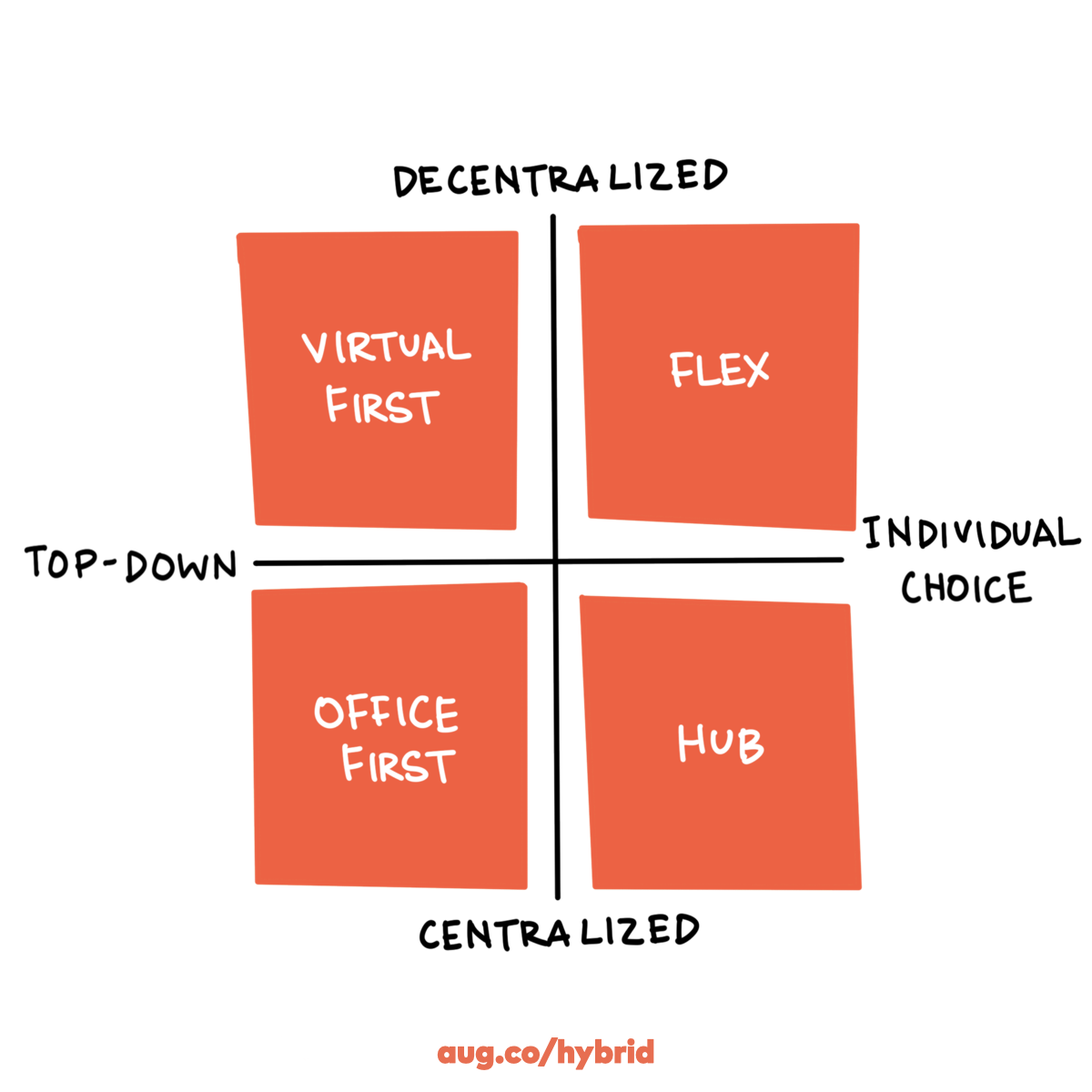Published March 1, 2022 | Updated April 9, 2022 | 3 minute read
Hybrid work has been a tough transition for leaders. It’s no easy lift to overhaul how your workplace functions while still maintaining day-to-day operations and meeting your targets.
It’s been a big transition for us at August as well. Even as a firm focused on agility and experimentation, we’ve had our share of challenges in trying to keep up with the relentless change and unpredictability of the past two years.
But adaptability has always been a core strength for resilient companies. So we created a playbook to help leaders not only keep up, but to anticipate changes, plan new strategies, and maximize your unique skills in new ways.
The key to making hybrid work successful lies in your capacity to adapt your operating model to fit how your teams work best in this new environment. The end goal is a model that allows everyone to contribute and thrive, no matter who or where they are.
No small task, huh?
But consider that this has always been a big task. Your previous in-person structure may also have been suboptimal for some of your employees. Which means hybrid work presents a huge opportunity to throw out the old playbook and find new ways of igniting engagement and output from your teams.
As you design the hybrid model that works best for your organization, you will face many choices. To help you organize your thinking, we’ve distilled these down into a few essential questions:
- Where are your employees located?
- How frequently, if at all, do employees gather in person?
- What is your default method of connecting?
- Who has authority over these choices, for individuals, teams, and the organization?
Based on your answers, your organization will probably fall into 1 of these 4 common models for hybrid work:
- Office First – You have multiple office locations. Local team members are expected to go into the office as the norm.
- Virtual First – Team members work remotely by default, but have access to shared space as needed.
- Hub – Individuals have the option of working remotely or from a central shared office location.
- Flex – Team members have access to multiple offices, and can choose to work virtually, as suits them best.
Understanding where your operating model currently falls is the first step in assessing its effectiveness and making adjustments. If something isn’t functioning as well as it should, perhaps there’s an element from one of the other models here that you incorporate.
Next, assess where your current hybrid model falls on these two axes:
- Decentralized – Centralized
- Top-Down – Individual Choice

Having worked with organizations of all sizes, around the world and across industries, we've identified a few practices that are especially helpful for each kind of hybrid model.
Here are a few plays from our Hybrid Work Playbook that we recommend focusing on:
For Decentralized models...
- Decision Owner – Identify the person who is trusted to make the final decision for a particular operation, even if others disagree.
- Work in Public – Learn faster and waste less time by sharing work in progress, rather than waiting until it’s in its final form.
- Hybrid Work Check-in – Make it a practice to check in with teammates on how they’re adjusting to hybrid work.
For Centralized models…
- Team Agreements – Make working norms explicit, in collaboration with your teams.
- Meet with Purpose – Minimize and streamline meetings by identifying clear focal points and meeting strategies, so the work can keep moving forward.
For Top-Down models…
- Reduce Workload – Embrace prioritization by focusing on the work that matters most.
- Rounds – Adopt structured group communication methods that make space for all voices.
- Feedback Across Difference – Support diversity, equity and inclusion by giving feedback that recognizes the cultural identities and power dynamics of the team.
For Individual Choice models…
- Decision Methods – Whether it’s decisive leadership or diverse input-sharing, choose a decision-making approach that fits the choice you’re trying to make.
- Equity Self-Check – Interrupt personal biases and build a more equitable working environment for your team.
- Wellbeing Reflection – Identify and begin to address the parts of work and life that are impacting your wellbeing – good and bad.
We go into these tactics in detail in our Hybrid Work Playbook. Check it out for in-depth breakdowns of each play, and how they can help you optimize hybrid work for the unique needs of your company, your teams, and your employees.
Hybrid work doesn’t have to be a “necessary evil.” In this moment of change, we all have an unprecedented opportunity to optimize the work for everyone. Let’s make the most of it.


.jpg)






